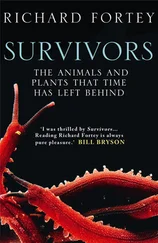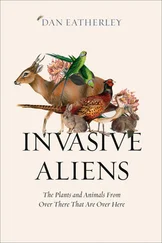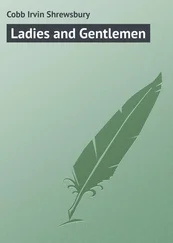Andrew H. Cobb - Herbicides and Plant Physiology
Здесь есть возможность читать онлайн «Andrew H. Cobb - Herbicides and Plant Physiology» — ознакомительный отрывок электронной книги совершенно бесплатно, а после прочтения отрывка купить полную версию. В некоторых случаях можно слушать аудио, скачать через торрент в формате fb2 и присутствует краткое содержание. Жанр: unrecognised, на английском языке. Описание произведения, (предисловие) а так же отзывы посетителей доступны на портале библиотеки ЛибКат.
- Название:Herbicides and Plant Physiology
- Автор:
- Жанр:
- Год:неизвестен
- ISBN:нет данных
- Рейтинг книги:5 / 5. Голосов: 1
-
Избранное:Добавить в избранное
- Отзывы:
-
Ваша оценка:
- 100
- 1
- 2
- 3
- 4
- 5
Herbicides and Plant Physiology: краткое содержание, описание и аннотация
Предлагаем к чтению аннотацию, описание, краткое содержание или предисловие (зависит от того, что написал сам автор книги «Herbicides and Plant Physiology»). Если вы не нашли необходимую информацию о книге — напишите в комментариях, мы постараемся отыскать её.
Discover the latest developments in herbicide and weed biology Herbicides and Plant Physiology,
Arabidopsis
Herbicides and Plant Physiology
Herbicides and Plant Physiology — читать онлайн ознакомительный отрывок
Ниже представлен текст книги, разбитый по страницам. Система сохранения места последней прочитанной страницы, позволяет с удобством читать онлайн бесплатно книгу «Herbicides and Plant Physiology», без необходимости каждый раз заново искать на чём Вы остановились. Поставьте закладку, и сможете в любой момент перейти на страницу, на которой закончили чтение.
Интервал:
Закладка:
1.8 The ever‐changing weed spectrum
Weed populations are never constant, but are in a dynamic state of flux owing to changes in climatic and environmental conditions, husbandry methods and the use of herbicides. Such change is evident from a consideration of cereal production in the UK. Cereals were traditionally sown in the spring, but MAFF (Ministry of Agriculture, Fisheries and Food) statistics show that by 1985, 75% of the crop was sown in the autumn (Martin, 1987) with major changes in the weed flora. In the 1950s and 1960s the greater area of spring cereals encouraged spring‐germinating broadleaf weeds such as knotgrass ( P. aviculare ), redshank ( P. persicaria ), black bindweed ( Bilderdykia convolvulus ), poppy ( Papaver rhoeas ), charlock ( Sinapis arvensis ), chickweed ( Stellaria media ) and fat hen ( Chenopodium album ). The move to winter cereals has meant less competition from these spring weeds because the crop is already established. However, winter cereals have encouraged weeds that germinate and establish in the autumn and early spring, particularly cleavers ( G. aparine ), speedwells ( Veronica spp.), chickweed ( S. media ) and field pansy ( Viola arvensis ). Similarly, traditional cereal cultivation techniques based on ploughing have given way to direct drilling and minimal cultivations using tines and discs, which are less costly and energy intensive. Indeed, Chancellor and Froud‐Williams (1986) have estimated that 40% of arable land in the UK is now cultivated without ploughing. One consequence is a reduction in the density of many annual broad‐leaf weeds since they require deep soil disturbance to bring buried seeds to the surface; a lack of seed return owing to herbicide use has also encouraged this decline. On the other hand, minimum cultivation has led to an increased abundance of annual grasses, particularly of species which readily establish near the soil surface and which have relatively short periods of dormancy. The main examples are black‐grass ( A. myosuroides ), meadowgrass ( Poa spp.) and sterile brome ( Anisantha sterilis ). Wild oats ( A. fatua ) have also flourished in minimum cultivation, even though their seed requires moderate burial. These observations have been quantified in a major, large‐scale survey of weeds present in winter cereals in the UK ( Table 1.12).
The frequency of creeping perennials has also increased with minimal cultivation, for example field bindweed ( C. arvensis ) and Canada thistle ( C. arvense ). Chancellor and Froud‐Williams (1986) also point to the occurrence of unusual species in undisturbed arable land, particularly wind‐dispersed seeds of the genera Epilobium , Artemisia , Conyza and Lactuca , and suggest that these may be the problem weeds of the future. Current increases in minimum and zero cultivation methods for establishment of cereal and oilseed crops, for environmental and financial reasons, will undoubtedly be mirrored by further changes in the weed spectrum of arable land.
Table 1.12 Main broadleaf weeds and grass weeds present in 2359 winter cereal fields.
Source: Whitehead, R. and Wright, H.C. (1989) The incidence of weeds in winter cereals in Great Britain. Brighton Crop Protection Conference, Weeds 1, 107–112.
| Broadleaf weeds | Fields infested (%) | Grass weeds | Fields infested (%) |
|---|---|---|---|
| Stellaria media | 94 | Poa annua | 79 |
| Veronica persica | 72 | Avena spp. | 42 |
| Matricaria spp. | 67 | Alopecurus myosuroides | 38 |
| Galium aparine | 58 | Elytrigia repens | 21 |
| Lamium purpureum | 47 | Lolium spp. | 14 |
| Viola arvensis | 45 | Anisantha sterilis | 13 |
| Sinapis arvensis | 36 | Poa trivialis | 7 |
| Veronica hederifolia | 30 | Volunteer cereals | 7 |
| Capsella bursa‐pastoris | 23 | ||
| Volunteer oilseed rape | 23 | ||
| Papaver rhoeas | 18 | ||
| Fumaria officinalis | 17 | ||
| Chenopodium album | 13 | ||
| Aphanes arvensis | 12 | ||
| Geranium spp. | 11 |
Herbicide choice and use has also had a profound effect on the weed flora in cereals (Martin, 1987). The use of 2,4‐D and MCPA since the late 1940s has caused a decline in many susceptible weeds, such as charlock ( S. arvensis ) and poppy ( Papaver rhoeas ), although more tolerant species, including chickweed ( S. media ), knotgrass ( P. aviculare ) and the speedwells ( Veronica spp.), have prospered. The introduction of herbicide mixtures in the 1960s with, for example, mecoprop and ioxynil, gave a much wider spectrum of weed control. Other herbicides have since been developed for an autumn‐applied, residual action, including, for example, chlorsulfuron and chlorotoluron for improved control of grasses, and new molecules for the control of specific weeds, for example fluroxypyr for cleavers ( G. aparine ). However, the same principles will always apply, namely that the selection pressure caused by sustained herbicide use will allow less‐susceptible weed species to become dominant, and their continued use may encourage the selection of herbicide‐resistant individuals within a species, as has now occurred to many herbicides (see Chapter 13).
Climate change is predicted to have significant effects on both the geographical distribution of weeds and the severity of weed infestations. Evolutionary rate (for instance, in the development of herbicide resistance) has been demonstrated to vary dependent upon both temperature and moisture availability. This is probably a result of a combination of factors including generation time, population size and relative fitness of herbicide‐resistant individuals. All of these factors may be affected by increased average global temperatures and subsequent differences in regional weather patterns (Anon., 2000). In addition, milder winters and warmer summers may allow for the survival and population growth of species that were previously unsuited to a region’s climate. Increases in the occurrence of Phalaris grasses in the UK in recent years may be a direct result of this (A.H. Cobb and J.P.H. Reade, personal observations).
1.9 Weed control
It is outside the scope of this book to examine the finer details of weed control. Instead, a broad overview is presented. The reader is referred to other, more comprehensive texts for further information, such as Naylor (2002).
According to Lacey (1985), weed control encompasses:
1 the reduction of the competitive ability of an existing population of weeds in a crop;
2 the establishment of a barrier to the development of further significant weeds within that crop; and
3 the prevention of weed problems in future crops, either from the existing weed reservoir or from additions to that weed flora.
The first two objectives are met primarily by chemical means, and the third relies on agronomy and crop husbandry. Cultural practices are forever changing, along with the weed spectrum, and it is now increasingly recognised that an integrated approach utilising both cultural and chemical practices is necessary for optimal weed control.
Читать дальшеИнтервал:
Закладка:
Похожие книги на «Herbicides and Plant Physiology»
Представляем Вашему вниманию похожие книги на «Herbicides and Plant Physiology» списком для выбора. Мы отобрали схожую по названию и смыслу литературу в надежде предоставить читателям больше вариантов отыскать новые, интересные, ещё непрочитанные произведения.
Обсуждение, отзывы о книге «Herbicides and Plant Physiology» и просто собственные мнения читателей. Оставьте ваши комментарии, напишите, что Вы думаете о произведении, его смысле или главных героях. Укажите что конкретно понравилось, а что нет, и почему Вы так считаете.











